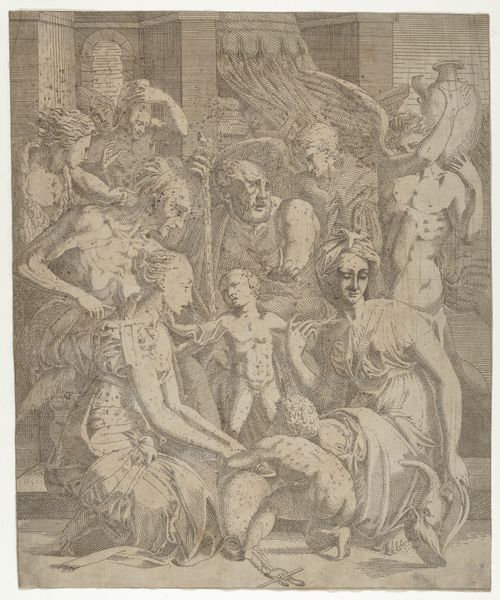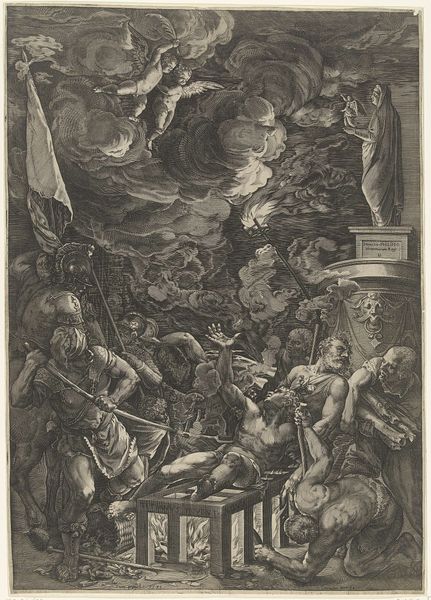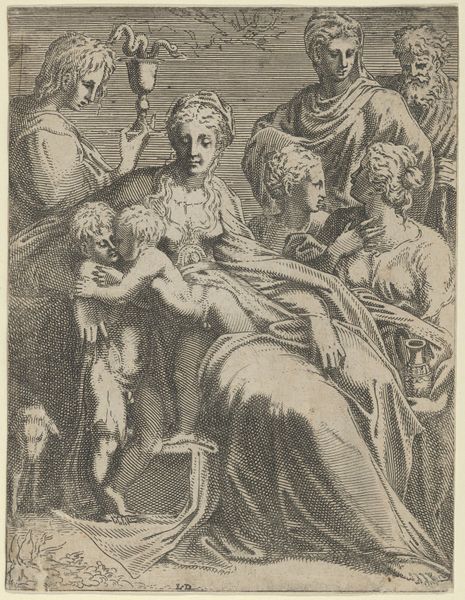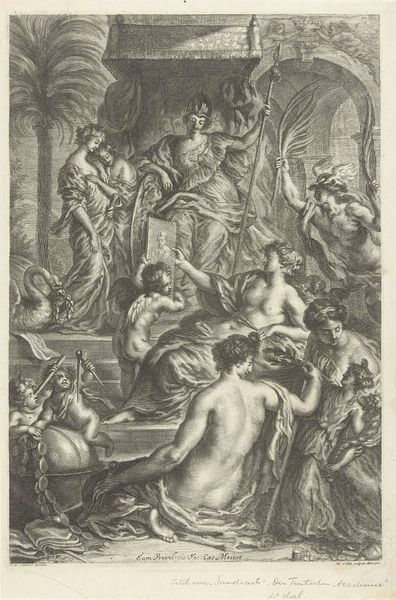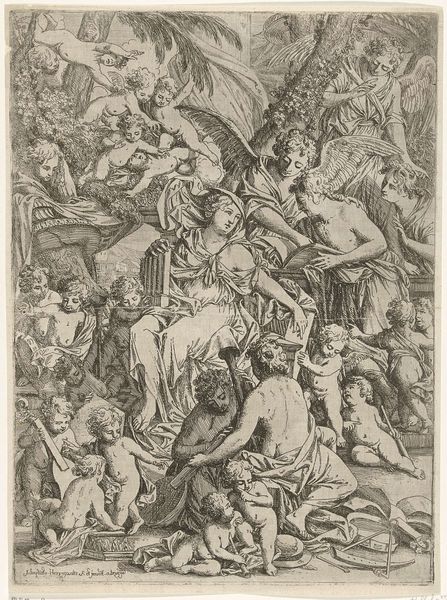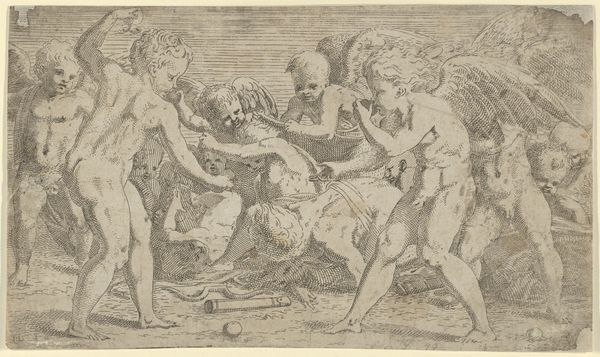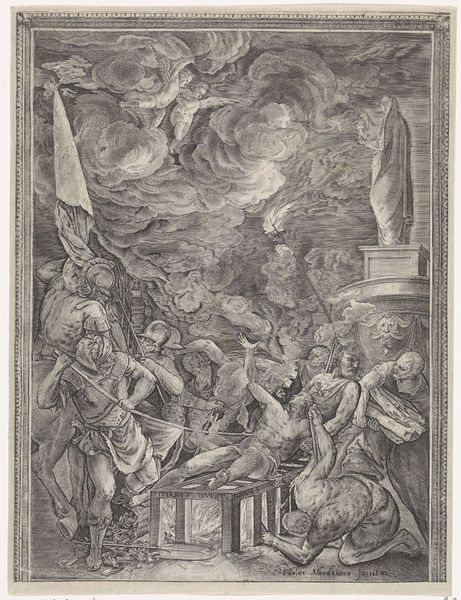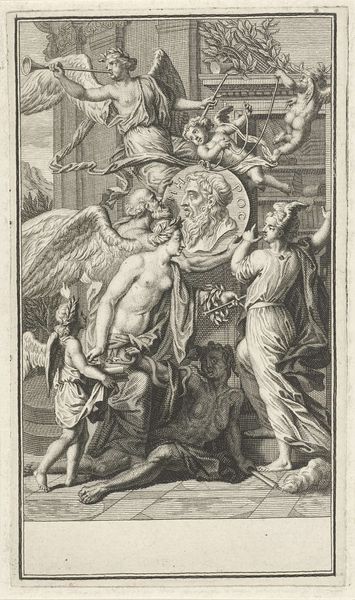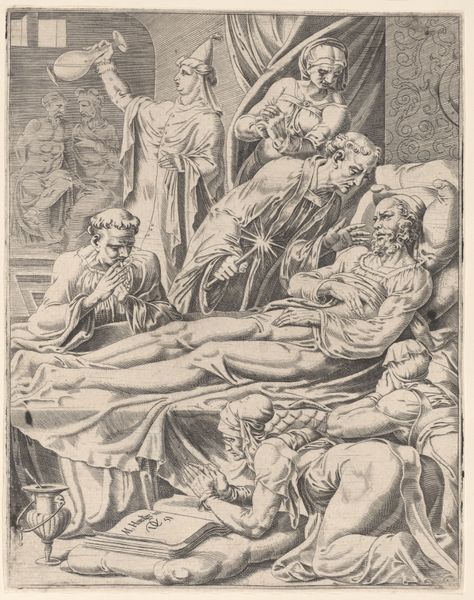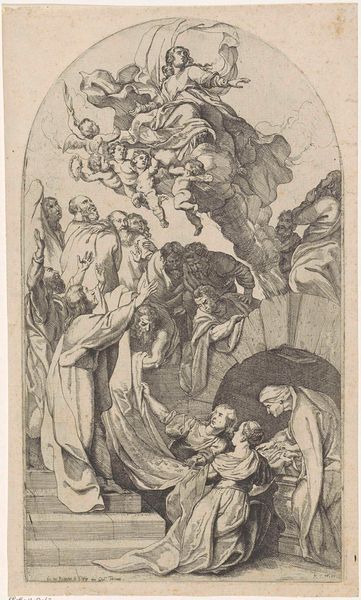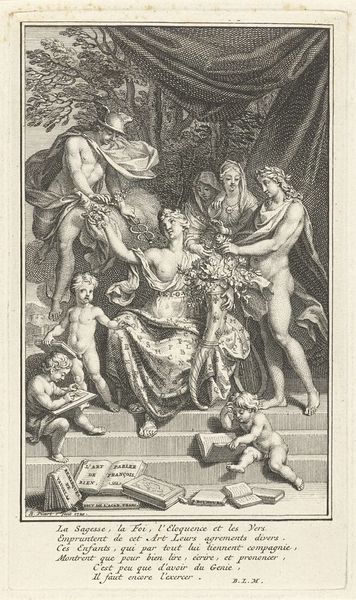
print, engraving
# print
#
figuration
#
line
#
history-painting
#
italian-renaissance
#
engraving
Dimensions: height 320 mm, width 258 mm
Copyright: Rijks Museum: Open Domain
Curator: Let's turn our attention to Antonio Fantuzzi's engraving, "Heilige Familie," created around 1544-1545, during the Italian Renaissance. Editor: The first thing that strikes me is how dynamic it feels despite being an engraving. The lines swarm around the figures, making them seem caught in a whirlwind. What material realities allowed Fantuzzi to create this type of engraving? Curator: Indeed. Fantuzzi's choices carry immense symbolic weight. Notice the composition centers around the infant Jesus, gesturing to the themes of divinity and salvation. His radiating form anchors our attention amidst all this tumult you mentioned. The lines evoke that the divine energy surrounds the scene. Editor: Yes, and thinking about that swarm of lines: the labour intensiveness needed for an engraver to hatch like this on a copper plate is remarkable. There were other printmaking technologies at the time, such as etching; this cross-hatching suggests intention, a laborious commitment. The consumption and appreciation of such highly wrought objects is not only about aesthetics but the labour congealed within. Curator: The classical motifs, such as figures emerging from broken pediments, also resonate, symbolizing renewal from a prior destruction, echoing themes within the story of the Holy Family itself and their position in the social landscape. The Italian Renaissance relished repurposing classical images, investing them with fresh narratives. Editor: Looking closer at those "fragments," I see the disjunctions of classical forms combined with the narrative as indicative of how artists navigated material availability within workshops. What "ready-mades" were there for the taking, repurposing? We should think through how the studio influenced Fantuzzi's work. Curator: Considering the symbolic depth and visual complexity we see here, this engraving showcases not only Fantuzzi's skill, but how the Holy Family saga serves as an intersection point for diverse cultural and religious meanings across history. Editor: Absolutely. Considering the intensive labor of such an engraving—every line precisely placed through skilled manual work on the copper—alongside symbolic communication, reveals a complex intersection. I appreciate you guiding us through its cultural meanings.
Comments
No comments
Be the first to comment and join the conversation on the ultimate creative platform.
